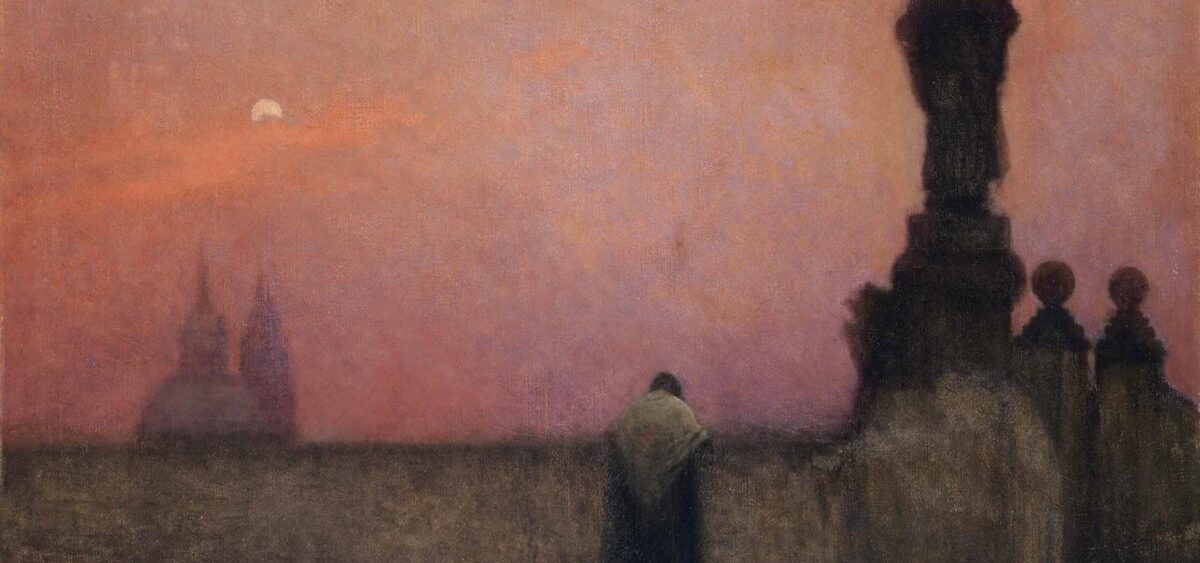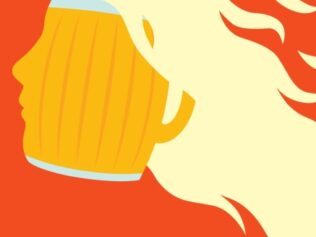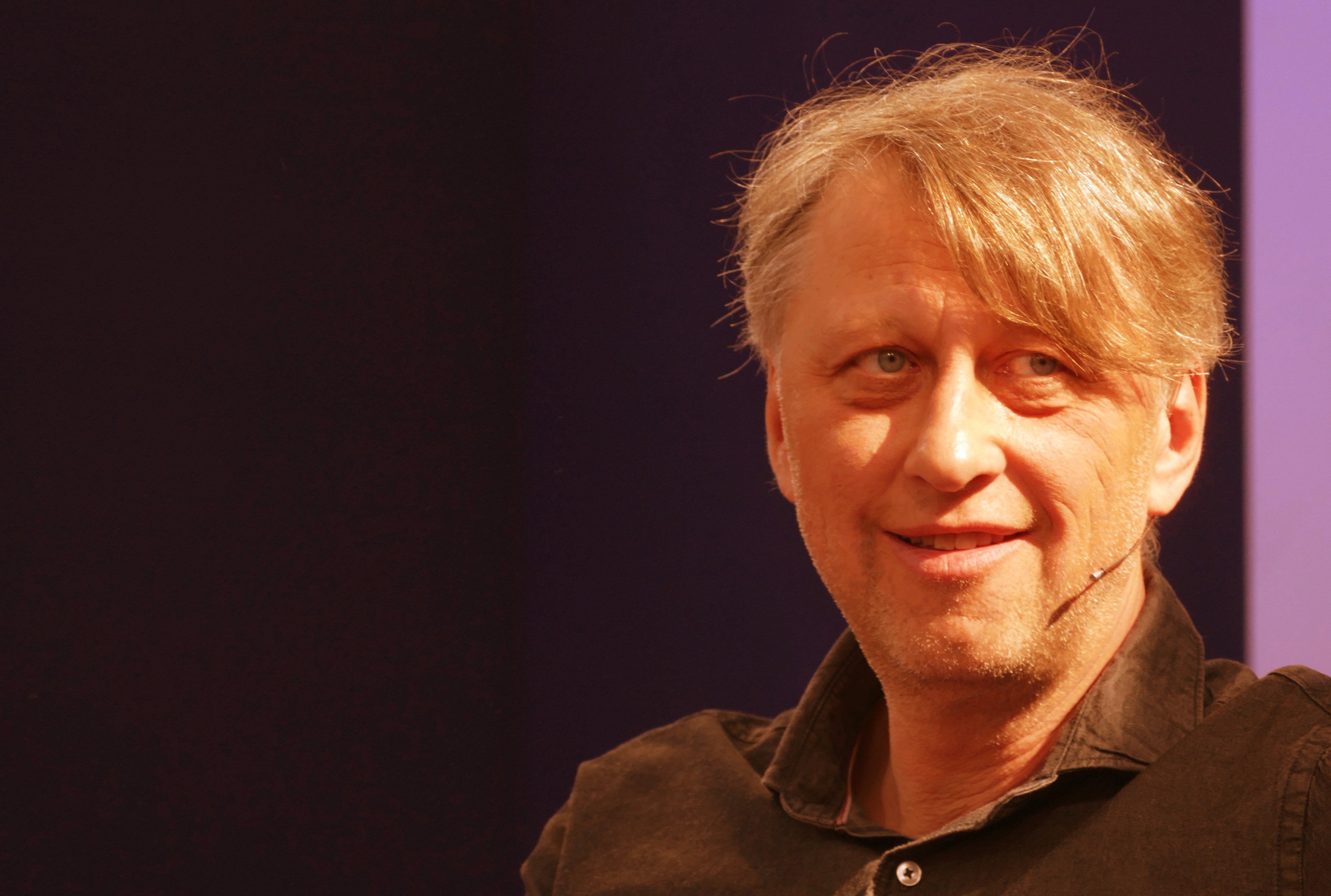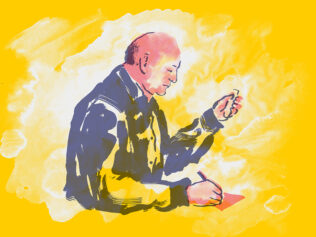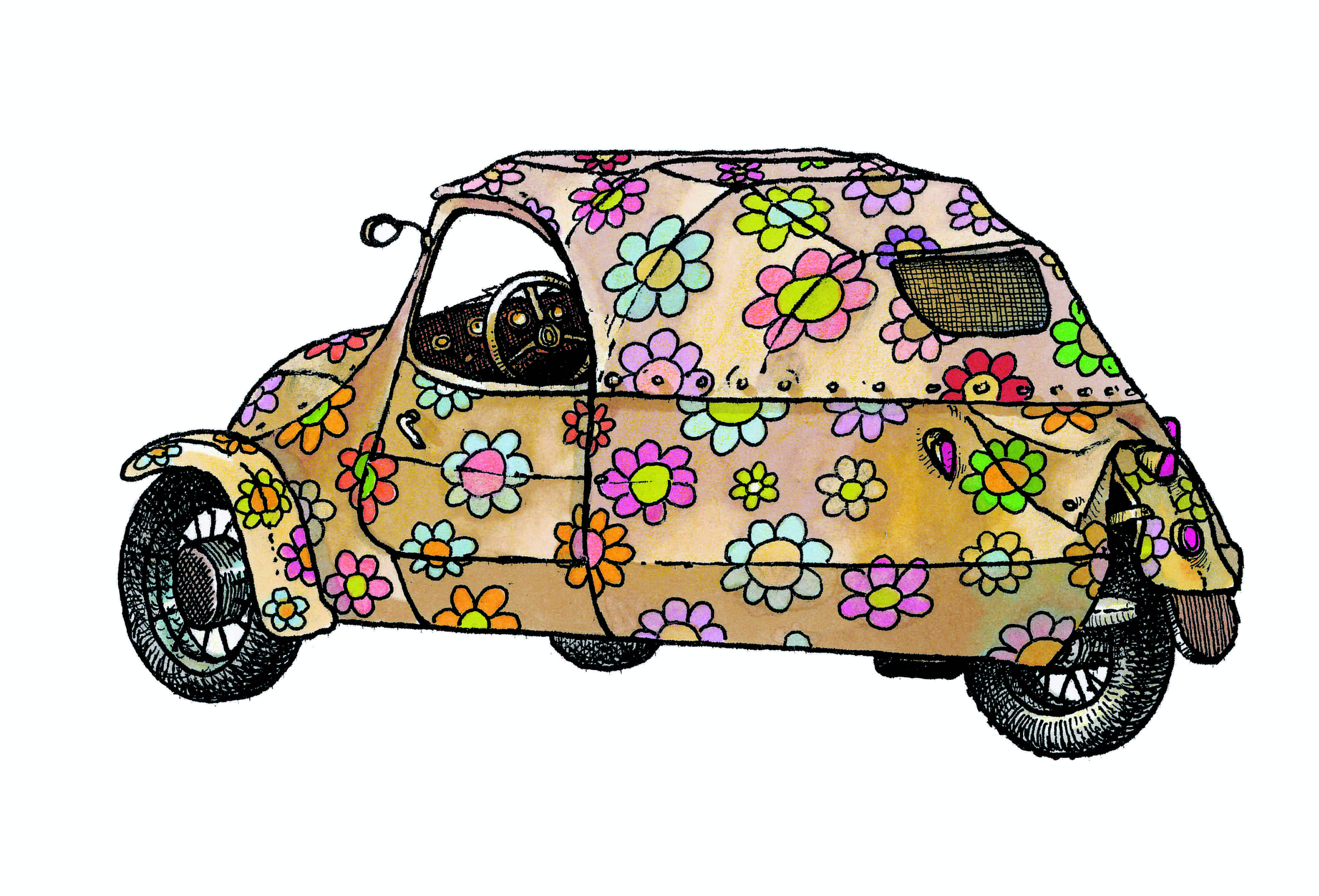
The funeral of a non-existent woman poet, bribes for speaking Czech, and forged manuscripts—it’s not a movie, but the Czech National Revival.
Dvůr Králové on the Elbe river, September 16, 1817. Václav Hanka—poet and librarian in the National Museum of the Kingdom of Bohemia (the predecessor to modern Czechia)—climbs the tower of the St. John the Baptist Church. He focuses his attention on a dusty sheaf of arrows. Raking through it, he comes across yellowed and dirty sheets of parchment. Since he can’t see much in the dark, he carries them downstairs. He starts reading and soon realizes that he’s looking at a true Czech gem. The manuscript, later described as královédvorský (after the name of the town where it was found), includes over a dozen samples of 13th-century Czech poetry, including excerpts from an epic poem praising the victory of the Czechs over foreign invaders. Czech society, which was undergoing a national revival, was hungering for its historic roots—a great heroic past of which to be proud. The English had Beowulf; the Germans had The Song of the Nibelungs. And the Czechs now had their own poem of a magnitude comparable to the Iliad. This was no coincidence.
A Cunning Forgery
A year earlier, poet Josef Linda had also found a manuscript among his books: Píseň Vyšehradská [Vyšehradská Song]. There was nothing particularly suspicious about it. After all, The Holy Cross Sermons—the oldest extant prose text in the Polish language—was discovered in a similar way. But in the case of the unearthed Czech manuscripts, too many of them appeared too quickly. Only a year after Hanka’s discovery, Count Franz Anton von Kolowrat-Liebsteinsky conveniently received an anonymous parcel containing excerpts from the poem “Libussa’s Judgment,” part of the Zelená Hora Manuscript. Some historians began to doubt the documents’ authenticity, but were heckled. It took a few more decades to prove that these weren’t original medieval artifacts, but forgeries skillfully created by Václav Hanka. He wasn’t the only one attempting to correct history. He might have been inspired by The Poems of Ossian, for instance, published at the end of the 18th century. Their author—Scottish poet James Macpherson—also claimed to have “discovered” a medieval poet’s manuscript while doing research. The difference during the Czech National Revival was the sheer volume of falsifications.
In his collection of newspaper columns about Czech literature and cinema Láska nebeská, Polish author Mariusz Szczygieł observed that “the Czech National Revival didn’t rely on armed uprisings, but on books.” Adam Mickiewicz, the Polish Romantic poet, rightly referred to the Czechs as a “nation of philologists,” because it was scholars rather than insurgents that enabled the national revival. With its daring characters, forged manuscripts, bribes for speaking Czech, and the funeral of a non-existent poet, this chapter of Czech history somewhat resembles a comically absurd movie plot. Owing to their performativity, the actions of the first Czech patriots, also known as the “Awakeners,” were later ironically described as “playing Czech.” Yet the fruits borne during this period are enviable. After all, it took skill worthy of the hero of The Good Soldier Švejk to build the Czech language from scratch in a Germanized society; to develop a Czech-language culture, stage theatrical performances, publish poetry, newspapers, scientific treatises, cookery books, and agricultural manuals.
Darkness Everywhere
To understand the complex predicament of Czech society at the threshold of the national revival, it’s necessary to go back in time and discuss the Thirty Years’ War, which took place more than two centuries earlier. One of the reasons behind it was religious conflict. In 1612, Emperor Matthias Habsburg, a devout Catholic, acceded to the Austrian throne. Instead of mitigating religious conflicts, he further ignited them. The first to revolt were Czech Protestants, who threw two Imperial governors and their secretary out of a window in Prague Castle (this was the second such famous occurrence in Prague and led to the coining of the term “defenestration”). They proclaimed Frederick—Protestant Elector Palatine of the Rhine in the Holy Roman Empire—the new king. A coalition known as the Catholic League was formed to fight against the Czechs and later against other Protestant countries. This led to the war, which lasted for thirty years, involving almost all European countries—from Spain to Sweden—and ravaging the continent. For the Czechs, it ended early—on November 8, 1620 the League crushed their army at the Battle of White Mountain.
This marked the beginning of a dark period in Czech history, referred to as Temno (Czech for “darkness”), after the title of a book by Czech historical novelist Alois Jirásek. Protestants who didn’t convert to Catholicism were forced to leave the country. Their properties were confiscated and distributed among newly-arrived German and Austrian aristocrats. The Czech upper classes disappeared almost overnight. It’s estimated that in the aftermath of this exodus, the Czech population was reduced by one-third. The process of Germanization was in full swing, further supported by the Counter-Reformation. The Jesuits took over the schooling system. Latin and German were the official languages except at the royal court, where French was used. The role of the Czech language was reduced to a rural dialect. It might have stayed like that for the next century had it not been for the reforms introduced by an ambitious mother and her equally driven son.
Czech, Please!
The ambition of the Habsburg monarchs—Maria Theresa and her son Joseph II—was to build a modern and centralized state, with a powerful army, codified law, reformed judicial system, and education accessible to everyone, including peasants liberated from serfdom. Most of all, however, they wanted the state administration to work efficiently. It soon turned out that it was not enough for officials to speak German only, because the empire comprised many nations that didn’t understand it. Thus state bureaucrats had to learn the relevant local languages. Czech was spoken by peasants migrating en masse to cities, but the common form was quite basic and inappropriate for issuing administrative acts or teaching modern agricultural methods. Before the language was reintroduced in elementary schools in 1791, it had to be invented anew. This was precisely the task that the Czech Awakeners were about to undertake.
Around 1770, a community of Czechophiles began to form in Prague. Writers associated with the historian Gelasius Dobner established the Royal Czech Society of Sciences and issued a journal pertaining to the fields of history, philology, and natural sciences. Everything was published in German, since the majority of patriots had only just begun to learn Czech. The Awakeners were supported by the aristocracy, which viewed the Habsburg reforms as an attack on their privileged status and found hope in the possible revival of their native language. Struggling to maintain their position, they would refer to the Kingdom of Bohemia’s right to autonomy within the Habsburg Monarchy. This resulted in the rise of so-called “national patriotism,” characterized by the rejection of German and the turn to local languages. The aristocracy’s support for the Awakeners went beyond generous donations. It was thanks to them that such fathers of the Czech revival as Josef Dobrovský were officially employed as court governors.
After Dobrovský completed theological studies in Prague and was ordained to the priesthood, he took on the office of tutor to Count Nostitz, while continuing his academic career. In 1792 he published the book Geschichte der Böhmischen Sprache und ältern Literatur [History of the Bohemian Language and Old Literature], which was followed by the publication of a two-volume Czech-German Dictionary. Dobrovský wrote in German and Latin—for a long time he didn’t believe that it would be possible to create a modern Czech language. The first to convince him that it wasn’t merely a lesson in a dead language was Josef Jungmann—a law graduate and teacher from Litoměřice. As he argued in O jazyku českém [On the Czech Language], “only the nation whose language has not completely died is still alive.” He also claimed that it was the role of educated people to speak and write in Czech in order to cultivate patriotism. He took his own advice to heart and translated into Czech such literary masterpieces as John Milton’s Paradise Lost and François-René de Chateaubriand’s Atala. Since a lot of words were missing in the Czech lexicon, he borrowed some from other Slavic languages, such as Polish, and then “Bohemized” them. He also created countless neologisms. His work inspired others—a circle of patriots formed around him, including scientists and writers such as historian František Palacký and poet Ladislav Čelakovský.
The Sect of Czech Zealots
The semiotician Vladimír Macura described this scholarly circle as an island of Czechness in an ocean of Germanness. At the time, society didn’t really trust the patriots, viewing them as a sect of Czech zealots led by Professor Jungmann, or a club of Czech dissenters. These comparisons weren’t unfounded. Upon joining the group, adepts had to undergo an initiation rite inspired by the Freemasons. A novice, or “Student,” was introduced to the group by a senior patriot (vlastenca), or “Teacher,” and had to change their name to a Czech-sounding one. This is how Schneider became Šnajder and Jungmann became Mladon. Patriots would also take a middle name of Slavic origin. Men often chose names etymologically connected with warfare—Vladislav, Boleslav, Vladivoj. Women, by contrast, might have picked names which referred to apparent “feminine virtues”—they were “god-fearing” (Božislava, Bohumila), or “good” (Dobroslava).
According to Macura, a patriot was a person who “writes or translates poetry, prose, and drama; whose interests encompass language and science-oriented issues: aesthetics, philosophy, chemistry, zoology, or pedagogy.” In short, they could engage with anything, but—importantly—in Czech. It wasn’t always that easy, though.
The Czech Mother
The Awakeners tried to speak Czech every day, but it didn’t always work. When writing letters, they would scribble German translations of more difficult words in the margins. But if any patriot spoke German in meetings, they had to put money in a special box as a form of punishment. Fines collected this way were spent on patriotic initiatives. They were used, for instance, to fund a substantial stipend for historian Pavol Jozef Šafárik—with the condition that all his future works would be written in Czech.
It wasn’t long before the Awakeners realized that the key to success was to convince women to follow their ideas. A Czech boy wasn’t supposed to learn the language at school, but from the cradle, watched by his Czech mother. To win over Czech women, the patriots utilized their propaganda machine. They would invite them to talks devoted to history and language, and would publish gender-stereotyped supplements in the Czech-language press: recipes and household tips. Poems and songs offered an image of a real Czech patriot as the perfect man and lover. As one such song goes: “Whoever wants to kiss me on the cheek, must be Czech and carry Czechness in his heart.”
From Žofia with Love
The initial shortage of women among the patriots turned out to be a problem in the least expected situations. In 1827, British poet John Browning wrote to a well-known Awakener—poet and folklorist Ladislav Čelakovsky. Browning was working on an English-language anthology of Czech writers and although he had already collected plenty of material, he couldn’t find any examples by Czech women. He asked Čelakovsky if he could send him some works. This request caused panic among the patriots. Although there were many Czech writers among them, they were all men. Admitting to the Brit that they were not aware of a single Czech woman poet would have been shameful. Instead, they decided to invent one. On Čelakovsky’s initiative, they created Žofia Jandová and sent a handful of poems ostensibly authored by her to Browning.
This is not, however, how the career of this imaginary poet ended. She kept publishing and her work appeared in the Anthology of Women’s Writing by Čelakovsky. Only his closest friends knew it was a hoax. Eventually the poet got bored with this game. Žofia Jandová’s disappearance was as spectacular as her entry. Čelakovsky not only officially announced that she had died, but also traveled to Moravia to attend her “funeral.”
Another woman poet invented for the public was Marie Čacké. In this case, it was only a pen name for the real Czech woman Božislava Svobodová. In her work, she created the persona of a poet of the people: a peasant who in between her chores praises the beauty of nature, evoking it in a simple, rural dialect. However, the problem with the lack of women writers was soon to disappear, as a new generation entered the stage led by Karolina Světlá and Božena Němcová. The latter was the author of one of the most important works in the Czech literary canon, the novella The Grandmother, which she wrote after her husband lost his job.
Czechness Takes Over Prague
“Czechness” gradually ceased to be promoted only by a handful of dogmatists. New organizations were founded: the cultural and educational institution Matice Česká and the Bouda theater where performances were staged only in Czech. The aristocracy was increasingly generous with their money. Thanks to Count Kaspar Maria von Sternberg and other aristocrats, the National Museum was opened. Count Lev Thun, on the other hand, funded Budeča—an educational institution run by Karel Slavoj Amerling. Its goal was to train young Czech boys to become future architects and it was impressively implemented. The institute had its own chemistry lab and printing press. Natural science classrooms were equipped with a plant drying room, garden, animal house, as well as stations for meteorological observations. Other facilities included drawing and music classrooms, a specially-designed place for arts and crafts, an aviary, and beehives.
The construction of the National Theater was another powerful manifestation of the revival’s success. Opened in 1881, this monumental building was completed thanks to public fundraising. The phrase Narod Sobiě (“the nation unto itself”), prominently displayed in gold lettering above the main stage, still serves as a reminder that almost all Czechs contributed to its construction.
Martyr or Patient?
The revival transitioned from a playful to political phase. Tentative ideas about a fight, not so much for a separate country, but at least for independence, began to emerge. In that regard, the leader was Karel Havlíček-Borovský, editor of the Prague newspaper Pražské noviny, who emphasized that only those Czechs who were aware of their nationality were able to fight for political and social rights. Soon a good opportunity arose: the Springtime of Nations broke out in Europe. When in 1848 the German Parliament in Frankfurt proposed to integrate Czech lands into Prussia, the Czech people voiced loud protest and supported Austria. They preferred an old but familiar enemy to a new one. They didn’t act selflessly, but hoped they would get something in exchange from the Habsburg Monarchy. In his letters To Frankfurt, František Palacký shared his conception of what was later called Austro-Slavism. He envisioned a democratized Austria transformed into a federal country with a majority of Slavic nations. Such a country was supposed to defend Slavs from German and Hungarian dominance.
Nothing came out of it, however. The revolution ended in fiasco and Czechs faced persecution. Havlíček-Borovský fell victim to it, too. The government closed the newspapers he ran. In 1851 he was sent to Brixen, a health resort in the Northern Alps. Released after five years, he returned to his homeland and died at the age of 35. His funeral was attended by the entire community of patriots, while his death soon became surrounded by legends—he became the first Czech martyr. Although it doesn’t diminish his achievements, it’s also worth mentioning that his mandatory stay at the resort, funded by the Austrian authorities, most likely prolonged his life, since he was suffering from tuberculosis.
It took a while before the Czechs found the courage to fulfill their dreams of independence. They were led in this endeavor by the man who first dared to question the authenticity of the aforementioned manuscripts, which for the Czechs were something sacred. Tomáš G. Masaryk started a scientific investigation which eventually proved the artifacts to be falsified. He managed to persuade people that a modern Czech society shouldn’t be built on forgery. And it’s hard not to agree. This doesn’t mean, however, that the achievements of that entire epoch should be canceled. Zdeněk Nejedlý, Minister of Culture and Education in the communist Czechoslovak government, had a point when he said: “Yes, it was doubtlessly a Romantic period. But it’s also doubtless that those naïve people achieved more at the time than the snooty ones that came after them.”
Translated from the Polish by Joanna Mąkowska


